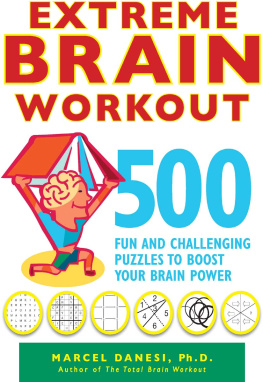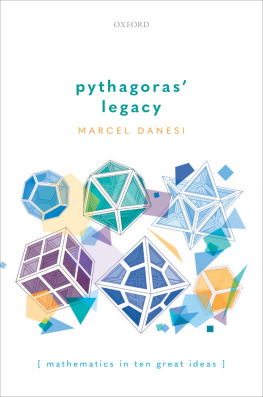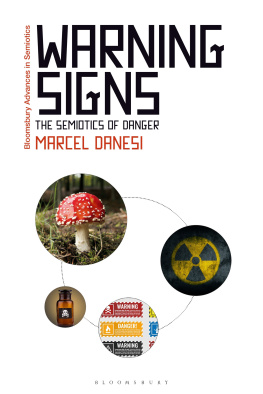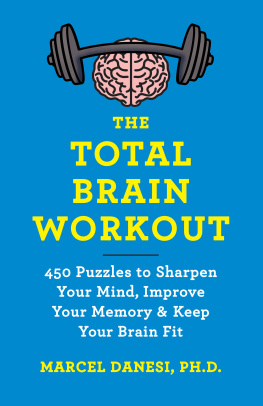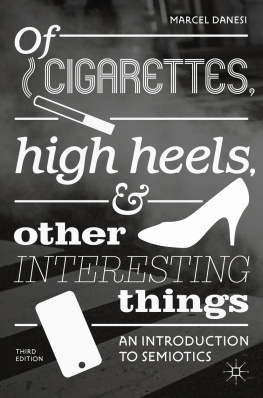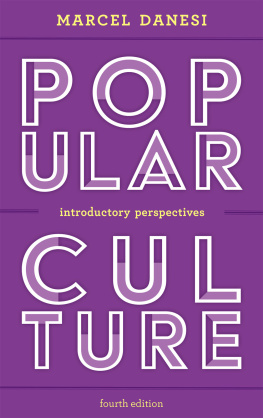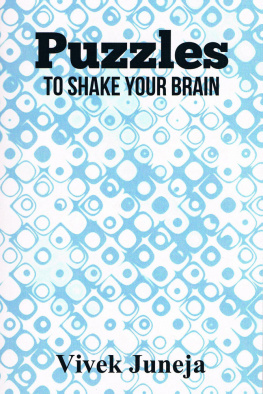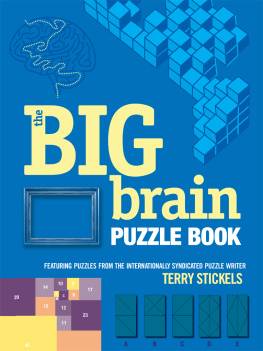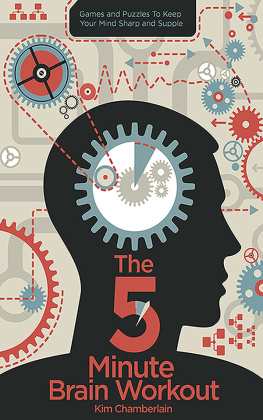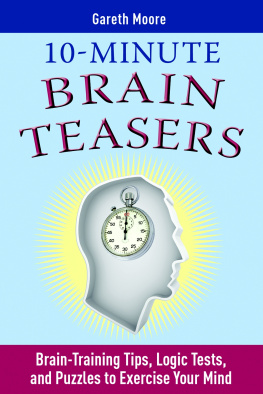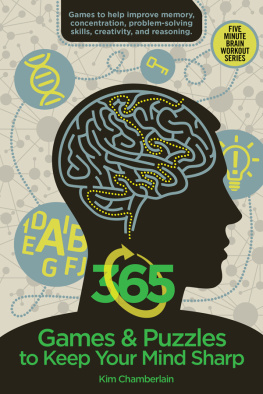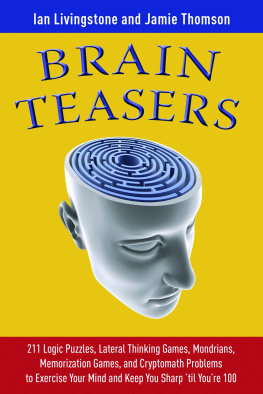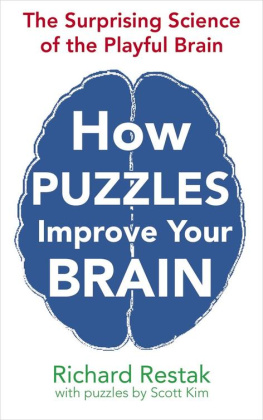Marcel Danesi - Extreme Brain Workout
Here you can read online Marcel Danesi - Extreme Brain Workout full text of the book (entire story) in english for free. Download pdf and epub, get meaning, cover and reviews about this ebook. year: 2011, publisher: Harlequin, genre: Children. Description of the work, (preface) as well as reviews are available. Best literature library LitArk.com created for fans of good reading and offers a wide selection of genres:
Romance novel
Science fiction
Adventure
Detective
Science
History
Home and family
Prose
Art
Politics
Computer
Non-fiction
Religion
Business
Children
Humor
Choose a favorite category and find really read worthwhile books. Enjoy immersion in the world of imagination, feel the emotions of the characters or learn something new for yourself, make an fascinating discovery.
- Book:Extreme Brain Workout
- Author:
- Publisher:Harlequin
- Genre:
- Year:2011
- Rating:5 / 5
- Favourites:Add to favourites
- Your mark:
- 100
- 1
- 2
- 3
- 4
- 5
Extreme Brain Workout: summary, description and annotation
We offer to read an annotation, description, summary or preface (depends on what the author of the book "Extreme Brain Workout" wrote himself). If you haven't found the necessary information about the book — write in the comments, we will try to find it.
Extreme Brain Workout — read online for free the complete book (whole text) full work
Below is the text of the book, divided by pages. System saving the place of the last page read, allows you to conveniently read the book "Extreme Brain Workout" online for free, without having to search again every time where you left off. Put a bookmark, and you can go to the page where you finished reading at any time.
Font size:
Interval:
Bookmark:

500 FUN AND CHALLENGING PUZZLES TO BOOST YOUR BRAIN POWER

We do not stop playing because we get old, we get old because we stop playing.
GEORGE BERNARD SHAW (18561950)
D O YOU LIKE PUZZLES ? If so, youre in luck, because research shows they are very good for your brain. If not, maybe this book will help you become accustomed to them and even like them by the end. It is both a compilation of puzzles and a training manual on how to solve them. It is also designed to help activate particular parts of the brain.
I recently searched the internet for relevant psychology, neuroscience, aging and education websites to get a sense of the kind of findings related to puzzles. I found a vast number of such sites. I then narrowed my search by looking up sources that I considered to be scientifically reliable. As it turns out, much of the research is still very encouraging. For example, a study published in Brain and Cognition in 2001 showed that older people performed significantly poorer on the Towers of Hanoi puzzle than younger people. However, subsequent studies have shown that if elderly people do such puzzles routinely, their skills not only improve, but they often become superior to those of younger people.
PUZZLES IN HUMAN LIFE
Since the dawn of civilization, human beings have been fascinated by puzzles of all kinds. There seems to exist a puzzle instinct in our species that has no parallel in any other species. Puzzles have been discovered by archaeologists across the world and across time. Throughout history, puzzles have also captivated the fancy of many famous figures. The Biblical Kings Solomon and Hiram organized riddle contests. Edgar Allan Poe, Lewis Carroll, Benjamin Franklin and many others devoted countless hours to the making of mind teasers. The widespread popularity of puzzle magazines, brain-challenging sections in newspapers, TV quiz shows, game tournaments and of course millions of puzzle websites bears testimony to the power that the puzzle instinct has over us. Millions of people the world over simply enjoy solving puzzles for their own sake.
Like an instinct, puzzle-solving involves a large element of commonsense thinking. But it is also true that without a basic understanding of how such thinking unfolds, and what techniques can be employed to enhance, practice and sustain it, the chances are that the ability to solve puzzles with facility will not emerge in many people. Without some form of systematic training and practice in puzzle-solving, frustration, disinterest and fear will probably ensue. Success at solving puzzles requires that several basic principles and lines of attack be grasped firmly and enduringly from the very beginning.
This book is designed to teach you precisely that. But this book by itself will not guarantee 100 percent success. It will, however, put you in a better mental position to attack puzzles of any kind more efficiently and intelligently. The kinds of techniques you will be learning and practicing systematically in this book will help you see why certain puzzles are best approached in particular ways.
If you are already an accomplished puzzle-solver, you can use this book as a collection to solve during your leisure hours. You will find plenty here to keep you occupied and entertained. No advanced knowledge is needed to solve any of the puzzles in this book.
PUZZLES AND THE BRAIN
Research makes it obvious that doing puzzles diminishes the ravaging effects on mental skills brought about by the process of aging. I became interested in the relation between puzzles, games and intelligence after working with brain-damaged children in Italy in the mid-1980s. Heres what I did. If a child was assessed as having a weak visual memory, impairing how she or he spelled words or read them, I would prepare appropriate puzzle material, such as jumbled letters that the child was asked to unscramble to construct words. If the word were tiger I would give the child the jumbled form gerti and a picture of a tiger. What surprised me was how quickly the children improved in their writing and reading skills. However, I had no real explanation for the improvement. And I still dont, even after publishing my findings and engaging in various theoretical debates with other researchers. We know so little about the connection between brain activities and learning processes that the outcomes I was able to produce may indicate nothing more than a co-occurrence, or coincidence, between an input and a brain activity, not a correlation, or relationship, between the two. Nevertheless, it is my cautious opinion that puzzles are indeed beneficial to brain activity and I will attempt to explain here why I believe this is so.
Consider a simple riddle such as What is yours yet others use more than you do? This riddle stumps many people because it seems to defy common logic. The solver has to think outside the box, as the expression goes, in order to solve it. The answer is Your name. Once the answer is reached, memory for it remains much more permanent because it is unexpected. The psychologists Sternberg and Davidson argued, as far back as 1982, that solving puzzles entails the ability to compare hidden information in a puzzle with information already in memory, and, more importantly, the ability to combine these two to form novel information and ideas. The thinking involved in solving puzzles can thus be characterized as a blend of logic, imagination, inference and memory. It is this blend, I would claim, that leads to a kind of clairvoyance that typically provokes an Aha! effect.
There is little doubt in my mind that puzzles are beneficial. I saw this with my own eyes within my own family. I once suggested to an ailing relative, who suffered from a serious brain-degenerative disease, to engage in crosswords and sudoku. He had never done puzzles in his life. His doctor immediately saw a significant slowing down of the degeneration. The relative eventually died of the disease, but I am convinced that his newfound passion for puzzles delayed his eventual loss of consciousness.
DESIGN OF THIS BOOK
In many ways, I have designed this book to complement and supplement my previous book, Total Brain Workout (Harlequin, 2009). Those who worked their way through that book will see a few of the same puzzle genres, but also many new and challenging types of puzzles.
The book is divided into three main parts. The first one consists of four chapters containing puzzles designed to activate the verbal part of the brain. The second part consists of five chapters organized to activate the logic centers. Many of these concepts derive from a university course I teach on puzzlesa course which has given me the unique opportunity to investigate, research and discuss the benefits of specific puzzle forms. The third part consists of one chapter that gives you practice doing so-called IQ tests.
Each puzzle genre is explained fully at the beginning of the set and a model puzzle is explained in detail. The puzzles in a particular set are organized in order of difficulty, thus giving you a chance to build your skills gradually as you go along. This book also features sidebars, peppered through each chapter, containing brain facts for your own information and edification. The answer section at the back of the book goes through all the solutions step-by-step. But you should not read these until you have attempted to solve the puzzles on your own first, no matter how frustrated you might be with any particular puzzle. If you get the answer using a different line of attack than the one suggested in the book, you should still study the given solution simply to get a different perspective on the puzzle-solving process itself. You might even get another legitimate answer. This too will enhance your puzzle-solving skills. Incidentally, these skills are not correlated with quickness of thought. A slow thinker can solve a puzzle just as successfully as a fast one can.
Font size:
Interval:
Bookmark:
Similar books «Extreme Brain Workout»
Look at similar books to Extreme Brain Workout. We have selected literature similar in name and meaning in the hope of providing readers with more options to find new, interesting, not yet read works.
Discussion, reviews of the book Extreme Brain Workout and just readers' own opinions. Leave your comments, write what you think about the work, its meaning or the main characters. Specify what exactly you liked and what you didn't like, and why you think so.

